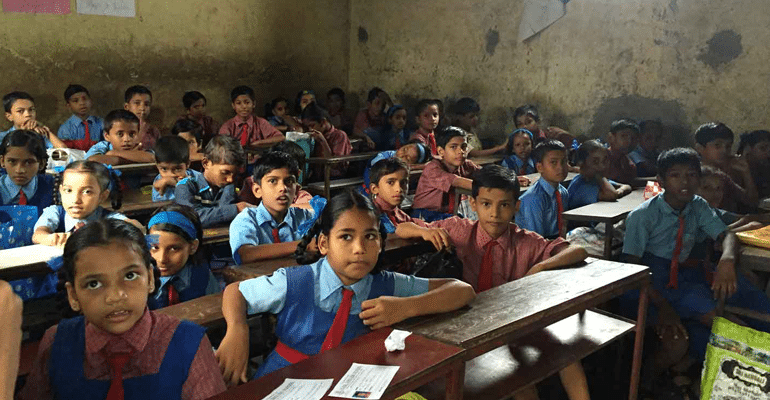According to the UNESCO’s 2019 Global Education Monitoring (GEM) report, Seasonal migration is a survival strategy for the poor and the problem is that it can disrupt education and expose children to child labor and workplace hazards.
Further, the study showed that in India about 80% of temporary migrant children in seven cities lacked access to education near work sites, and 40% worked, experiencing abuse and exploitation.

Thanks to Surat Municipal Corporation, who are running 120 special schools for children of migrant workers, so that their future is not compromised. Also, to encourage migrant workers and their families to settle in the city, the schools will have other mediums of instructions apart from native Gujarati language.
The city is known to be the hub of diamonds and textiles and due to this large number of people from Hindi-speaking states, Odisha and Andhra Pradesh. Now more than 66,000 students have been enrolled in these non-Gujarati medium schools and the number is on the rise, mentioned a TOI report.
Currently, 7 schools run by SMC has the medium of instruction in Odia, 3 in Telugu in the city. The official data mentions that a maximum of 55 schools catering to the primary standards from Class I to Class- III are in Marathi medium, followed by 28 Urdu medium schools.
In an interview with TOI, an official said, “We have 25 Hindi and nine English medium schools. We have started the secondary classes in Marathi and Hindi mediums as well to ensure that children of migrants get the adequate educational opportunity.”
One cannot expect a majority of people to come in Gujarat for work and send their children to private schools. “We are perhaps the only municipal body which runs schools in so many languages and their number has been increasing. Once a city caters to the educational and health needs, people prefer to bring their entire family to their place of work and that’s a good sign for a city,” the official added.
Municipal sources said such schools were conceptualized in the late 1990s considering that a large chunk of the people coming to work in Surat were migrants. Referring to the 2001 census data, they said migrants constituted about 30% of the city’s population.
Tall buildings don’t make a city great but catering to the needs of the poor does. An official of the housing and urban affairs ministry said, “These are the softer features of a city to be called as a smart city rather than just building high rises and iconic structures. Surat has been a model for its inclusive approach to meet the requirements of different sections of society. The SMC has also undertaken some building complexes for the homeless.”

